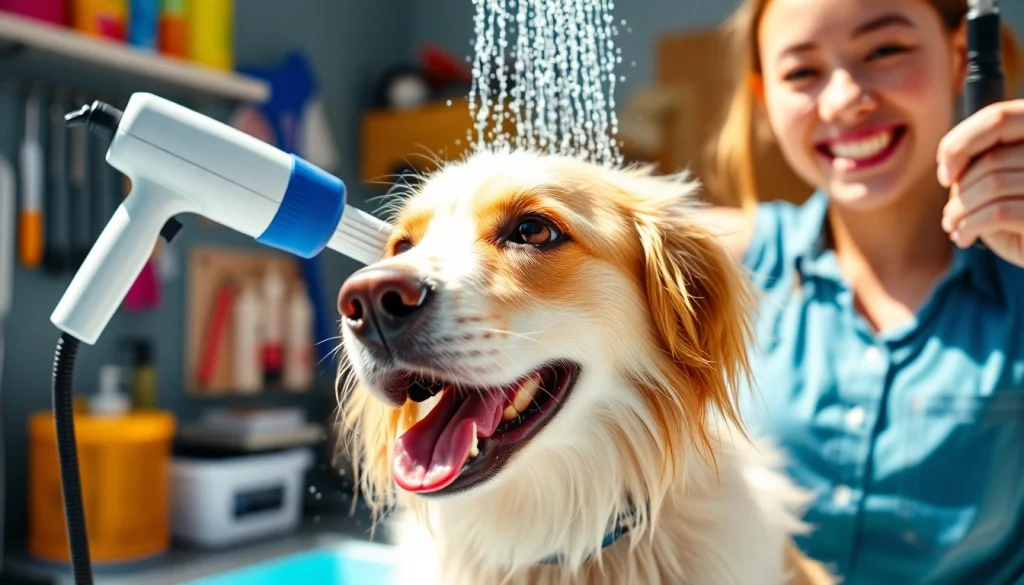Effective Pet Store Grooming Techniques for a Happy, Healthy Dog

Understanding the Importance of Pet Store Grooming
When it comes to maintaining the health and happiness of our furry friends, pet store grooming plays a pivotal role. Grooming is not just about aesthetics; it significantly impacts the well-being of pets, making regular grooming sessions essential for dog owners.
1. Benefits of Regular Grooming for Dogs
Regular grooming offers a plethora of benefits for dogs, from health and hygiene to bonding and behavioral improvements. Some of the main benefits include:
- Health Monitoring: Grooming sessions provide an excellent opportunity for owners to check for signs of issues such as lumps, skin irritations, or parasites.
- Improved Hygiene: Regular brushing helps remove dirt, dead hair, and dander, reducing the risk of skin conditions and allergies.
- Enhanced Bonding: Grooming is a great way to spend quality time with your dog, reinforcing the bond between pet and owner.
- Reduction of Shedding: For many breeds, regular grooming can significantly reduce shedding, making maintenance easier.
- Behavioral Benefits: Regular grooming can help mitigate anxiety and fear of grooming tools, leading to a more relaxed pet during appointments.
2. Common Grooming Mistakes to Avoid
Even the most experienced dog owners can fall into the trap of making grooming mistakes. Addressing these can enhance not only the dog’s appearance but also their overall happiness:
- Neglecting the Brush: Failing to brush regularly can lead to mats and tangles, especially in long-haired breeds.
- Using the Wrong Tools: Not all tools work for every dog. Using inappropriate grooming tools can hurt your dog and lead to resistance during grooming sessions.
- Overbathing: Bathing too frequently can strip natural oils from a dog’s skin, leading to dryness and irritation.
- Skipping Professional Help: Certain breeds require specialized grooming that can be challenging for laypersons. Ignoring professional help can lead to disastrous outcomes.
3. Choosing the Right Grooming Tools for Your Pet
Selecting the right grooming tools is crucial for effective grooming. Here are the essential tools every dog owner should consider:
- Brushes: Choose brushes designed for your dog’s coat type. Slicker brushes work well for long-haired breeds, while rubber brushes can be great for short-haired breeds.
- Combs: Use combs to detangle areas that are prone to mats, particularly around the ears and legs.
- Shampoo: Opt for a pet-specific shampoo that is gentle on their skin. Avoid human shampoo, as it can be too harsh.
- Dog Shower Gun: Consider tools like a dog shower gun with multiple settings for a gentler bathing experience.
- Nail Clippers: Regular nail trimming is vital. Choose between scissor-type or guillotine-type clippers based on your comfort.
Essential Grooming Techniques for Different Dog Breeds
1. Breeds with Long Fur: Special Care Guidelines
Long-haired breeds require consistent grooming to prevent matting. Techniques include:
- Daily Brushing: Long-haired dogs should be brushed at least once a day to keep their coat free of tangles.
- Bathing Frequency: Depending on the dog’s activity, bathing every 4-6 weeks should suffice, using a gentle pet shampoo.
- Professional Styling: Consider taking long-haired breeds like Poodles, Shih Tzus, or Afghan Hounds to a professional groomer regularly for trims and styling.
2. Short-Haired Breeds: Maintaining Cleanliness
Short-haired breeds are generally easier to groom, but they do require attention to keep their coat healthy:
- Weekly Brushing: Use a grooming glove or a bristle brush once a week to remove loose hairs.
- Bathing: Short-haired breeds usually only need a bath every few months unless they get particularly dirty.
- Regular Inspection: Conduct routine checks for skin irritation or parasites, particularly in areas where ticks might hide.
3. Maintenance for Mixed Breeds: Best Practices
Mixed breeds can inherit a range of grooming needs. Observe the predominant traits and adopt a flexible grooming routine:
- Evaluate Coat Type: Determine whether the dog leans towards a long or short coat and choose grooming tools accordingly.
- Adjust Grooming Frequency: Be observant; increase grooming frequency if you notice shedding or matting more than usual.
- Consult a Grooming Expert: For mixed breeds, obtaining professional advice on grooming needs can be beneficial.
How to Create a Comfortable Grooming Environment
1. Setting Up a Safe Grooming Space at Home
Creating a welcoming environment at home can simplify the grooming process:
- Designate a Grooming Area: Choose a quiet and well-lit space with a comfortable surface for your pet.
- Use Non-Slip Mats: To ensure safety during grooming, place non-slip mats in your grooming area.
- Gather Supplies Together: Having all tools readily available minimizes interruptions during grooming sessions.
2. Using the Right Products for Stress-Free Grooming
The right products can significantly alleviate stress during grooming:
- Calming Sprays: Consider using pet-safe calming sprays before grooming to create a relaxed atmosphere.
- Comfortable Grooming Tools: Invest in ergonomic grooming tools that are comfortable for both you and your pet.
- Grooming Tables: If possible, use a grooming table to provide the right height for easier access during grooming.
3. Engaging Your Pet During Grooming Sessions
Making grooming a fun experience encourages your pet to cooperate:
- Use Positive Reinforcement: Reward your dog with treats or praise during and after grooming sessions to create a positive association.
- Incorporate Play: Play with your pet between grooming tasks, which can help reduce anxiety and make sessions more enjoyable.
- Take Breaks: If your pet seems uncomfortable, take a break and allow them to relax before continuing.
Professional Grooming Services vs. At-Home Grooming
1. When to Seek Professional Help
Some situations warrant professional grooming services:
- Complex Grooming Needs: Dogs with specific cuts or styles (e.g., Poodles or Terriers) should be groomed by a professional.
- Severe Matting: If your dog’s coat is severely matted, a professional groomer can assess the situation safely.
- Health Issues: If your pet is older or ill, professional groomers can provide a gentle experience suited to their condition.
2. DIY Grooming Benefits and Limitations
While at-home grooming can be cost-effective and convenient, it comes with its own limitations:
- Cost Savings: Grooming at home can save money in the long run, especially for breeds that require regular grooming.
- Bonding Experience: Grooming your pet at home allows for a and builds trust between you and your pet.
- Learning Opportunity: DIY grooming offers a chance to understand your pet’s unique coat and needs better.
- Skill Limitations: Without proper training, some grooming techniques may be performed incorrectly, leading to health risks.
3. Finding Pet Store Grooming Supplies
Your local pet store is a valuable resource for grooming supplies. Consider these tips:
- Consult Staff: Pet store staff are often knowledgeable about the best products for your specific breed and can recommend quality items.
- Read Reviews: Look for online reviews or ask other dog owners for recommendations on effective grooming products.
- Regularly Update Supplies: As your dog’s coat changes with seasons, be sure to update your grooming supplies accordingly.
Keeping Your Pet Healthy Through Regular Grooming
1. Identifying Skin Issues Early On
Regular grooming allows for early detection of various skin issues:
- Lumps and Bumps: Feel for any unusual bumps or lumps during brushing sessions, which might need veterinary examination.
- Redness and Irritation: Grooming allows you to spot areas of redness or irritation that may indicate allergies or infections.
- Fleas and Ticks: Regularly checking the skin and coat helps catch infestations before they become a problem.
2. The Role of Grooming in Overall Health
Merging grooming with healthcare can ensure your dog remains healthy:
- Dental Hygiene: Complement grooming with dental care by using dog-safe toothpaste and brushes regularly.
- Weight Management: Grooming sessions, combined with play and exercise, help monitor and maintain a healthy weight.
- Regular Vet Visits: Incorporate grooming into your routine that includes regular veterinary check-ups, contributing to a holistic health approach.
3. How Grooming Contributes to Your Pet’s Wellbeing
Grooming is more than a physical need; it touches on several aspects of your pet’s mental health:
- Stress Reduction: Regular grooming helps to reduce stress and anxiety, creating a more relaxed pet.
- Socialization: Engaging in grooming activities builds trust and socialization skills with other dogs and people.
- Awareness of Body Changes: Grooming helps pets become accustomed to touch, allowing them to feel more comfortable during vet examinations.







